3D printing, Sound and Art
We had the chance to host Anca Horvath Assistant Professor from Research Laboratory for Art & Technology, Aalborg University for a few days while she was working on an art project.
Sonic coexistence is an artwork that was exhibited as part of the exhibition Cities of the Future: Living Together held in Venice, between the 22-25th June, that was part of the ACM Creativity and Cognition 2022 Conference. The exhibition was curated by Silvia Cassini, Camilla Silvaneschi and Vladimir Kolzeev and took place at the Sala del Camino in Giudecca.
The artwork consisted of a four-speaker setup and four objects, that when moved would change the sounds played in the four speakers (gyroscopes inside the objects send the position of the object to a Raspberry Pi). When all the objects had the same orientation, the sound in the space would become coherent. Therefore, the participants had to work together to build a coherent sound environment. The sounds played were collected from different places in Venice (such as Mercato di Rialto, Via Garibaldi, San Marco, Lagoon) by a former professor of cultural anthropology, Antonio Marazzi, and were mixed using granular synthesis.
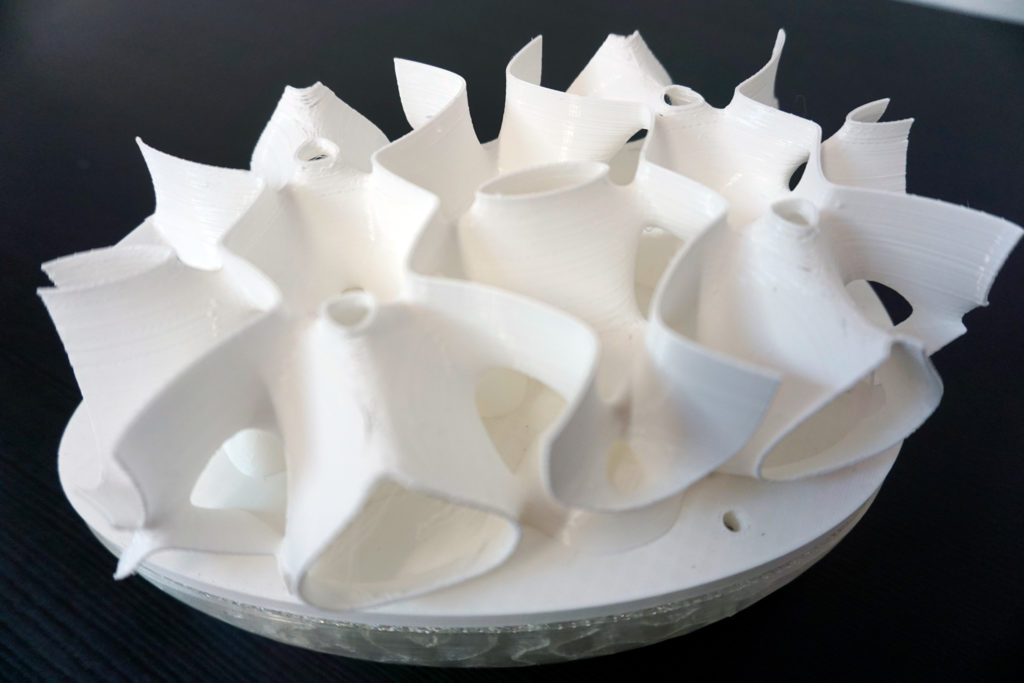
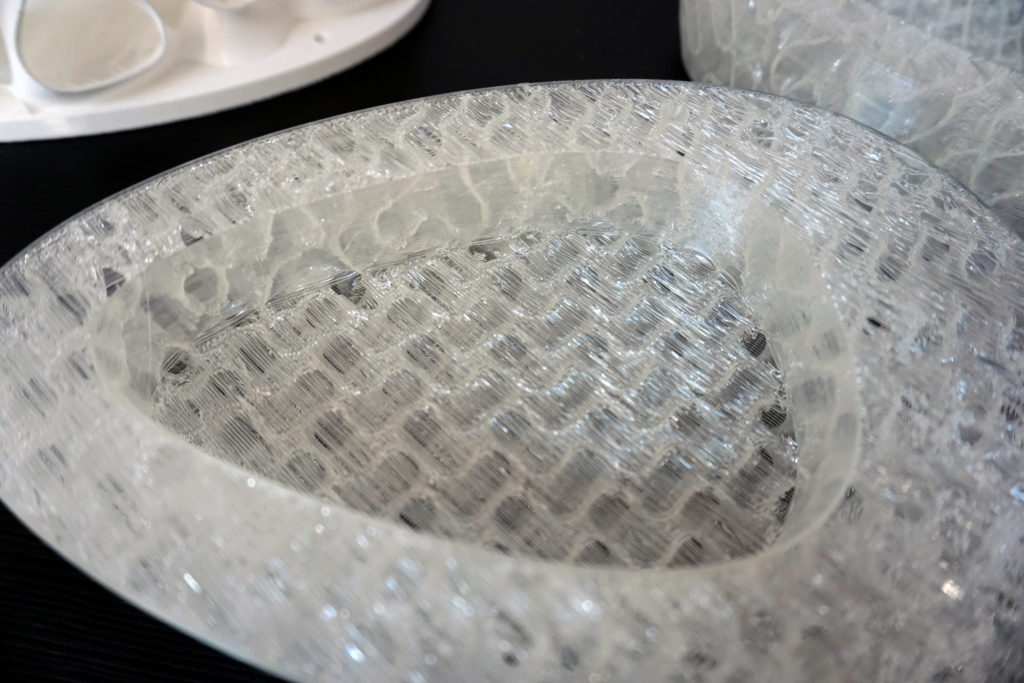
In other words: by allowing participants to co-construct geolocated Venetian soundscapes through interactive, sonified objects, the artwork re-imagined how humans can coexist in post-pandemic public spaces.

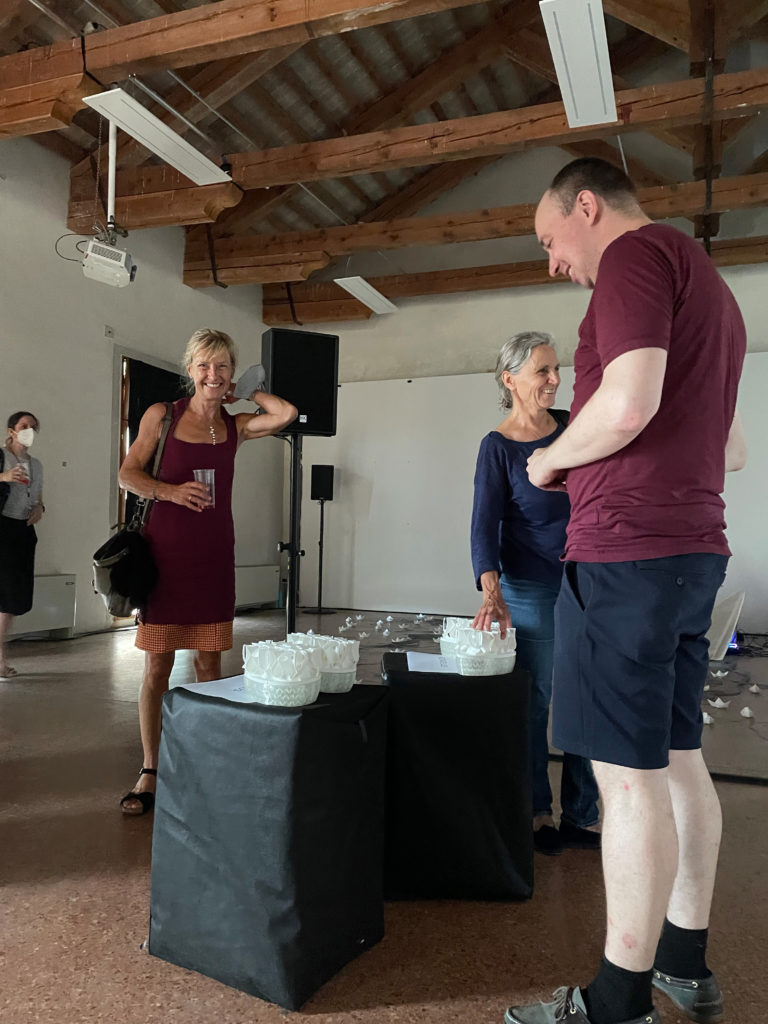
The four objects were printed with PLA lattice structure and placed on a TPU 79 shore hardness lattice structure. The shapes of the objects contain 3D Chladni patterns, or 3D lattices which represent generalizations of Chladni patterns.
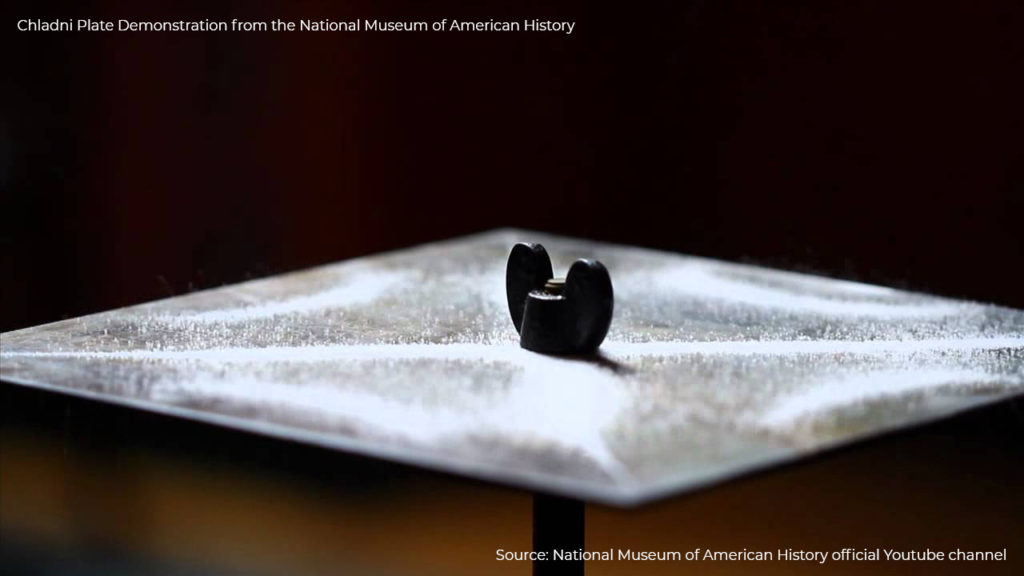
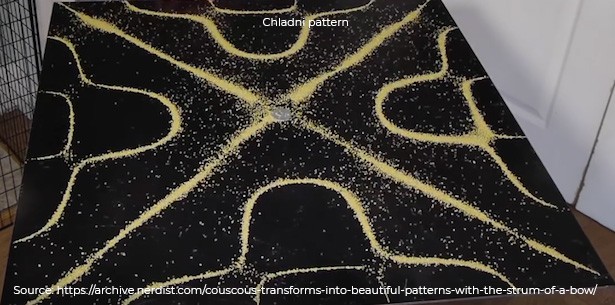
When a plate is vibrated with sounds at certain frequencies, the plate oscillates not only as a whole, but also as parts. The boundaries between these vibrating parts, which are particular for different frequencies, are called node lines and do not vibrate. The other parts oscillate continuously. If a granular material is placed on the plate, the material will create a pattern showing the standing waves in the plates. These are called Chladni patterns and their discovery started the field of acoustics. Recently, a generalization for 3D Chladni patterns was introduced by Martin Skrodzki, Ulrich Reitebuch and Konrad Polthier here. One of these patterns was used in the design of the sonified objects. Future research consists of testing the acoustic and mechanical properties of these shapes – which can only be fabricated using 3D printing.
The project was created by Anders Eskildsen, Assistant Professor, with the Sound and Music Knowledge Group, Aalborg University and Anca Horvath, Assistant Professor, from the Research Laboratory for Art & Technology, Aalborg University. Anders’ work sits at the intersection of music, sound and technology, while Anca works with architecture, geometry and technology. Previously, she worked at Create it REAL as a computational designer. Their profiles can be found here:
Anders: https://vbn.aau.dk/en/persons/146493
Anca: https://ancah.myportfolio.com/about
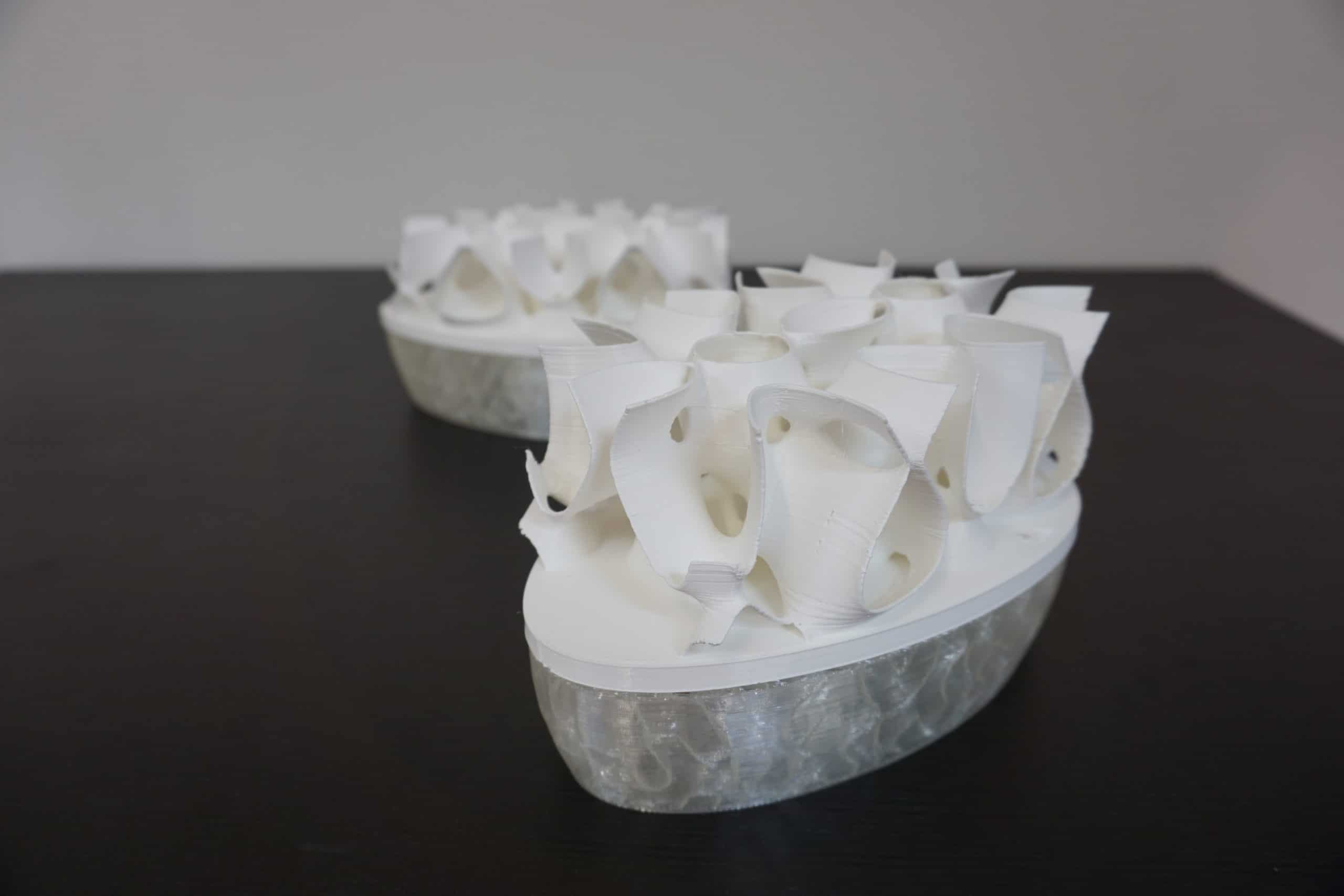



1 Comment